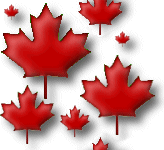Technology Corner: Web 2.0 Resources
From Wikipedia:
Web 2.0 is a term often applied to a perceived ongoing transition of the World Wide Web from a collection of websites to a full-fledged computing platform serving web applications to end users. Ultimately Web 2.0 services are expected to replace desktop computing applications for many purposes.
There have been numerous articles published in the last two years (Abram (2006), Harris (2006), Lackie (2006), O'Hear (2006) and OReilly (2005)) that refer to Web 2.0 technology and how it will change they way teachers and students communicate and work on the Internet.
Students across North America have already adapted Web 2.0 technologies in their everyday lives by using social networking websites like FaceBook and MySpace where they can post and share information online.
Several Web 2.0 options are now available for teacher-librarians in Canada. Some, like BookWellRead, Reader2, Junklog, and LibraryThing offer shared book reviews and recommendations that can be helpful in assessing purchases. Others, like Flickr, Plum and WhiteBoard, offer students and teachers ways of creating documents and presentations that can be saved online and shared with others.
Rather than saving their projects and working with one computer, students and teachers will be able to save resources, bookmarks, presentations and documents online and retrieve them from any computer at school. Below are examples of Web 2.0 applications that demonstrate where technology in schools is heading.
______________________________________________________
References
Abram, Stephen (2006). Web 2.0, Library 2.0, and Librarian 2.0: Preparing for the 2.0 World. SirsiDynix OneSource Retrieved April 6th, 2007 from http://www.imakenews.com/sirsi/e_article000505688.cfm?x=b6yRqLJ,b2rpQhRM
Harris, Christopher (2006). School Library 2.0. Say good-bye to your mother’s school library. School Library Journal, 5/1/2006 Retrieved April 6th, 2007 from http://www.schoollibraryjournal.com/article/CA6330755.html
Lackie, Robert J. (2006)WEB 2.0 and Its Technologies for Collaborative Library Communication. Red Orbit. Retrieved online April 6th, 2007 from http://www.redorbit.com/news/technology/740341
/web_20_and_its_technologies_for_collaborative_library_communication/index.html?source=r_technology
O'Hear, Steve (2006) Web's second phase puts users in control. The Guardian Unlimited Online. Retrieved April 19th, 2007 from http://education.guardian.co.uk/elearning/story/0,,1801086,00.html
O'Reilly, Tim (2005). What Is Web 2.0? Design Patterns and Business Models for the Next Generation of Software. O'Reilly Media. Retrieved April 19th, 2007 from http://www.oreillynet.com/pub/a/oreilly/tim/news/2005/09/30/what-is-web-20.html
______________________________________________________
Copyright ©2007 Canadian Association for School Libraries | Privacy Policy | Contact Us
ISSN 1710-8535 School Libraries in Canada Online
